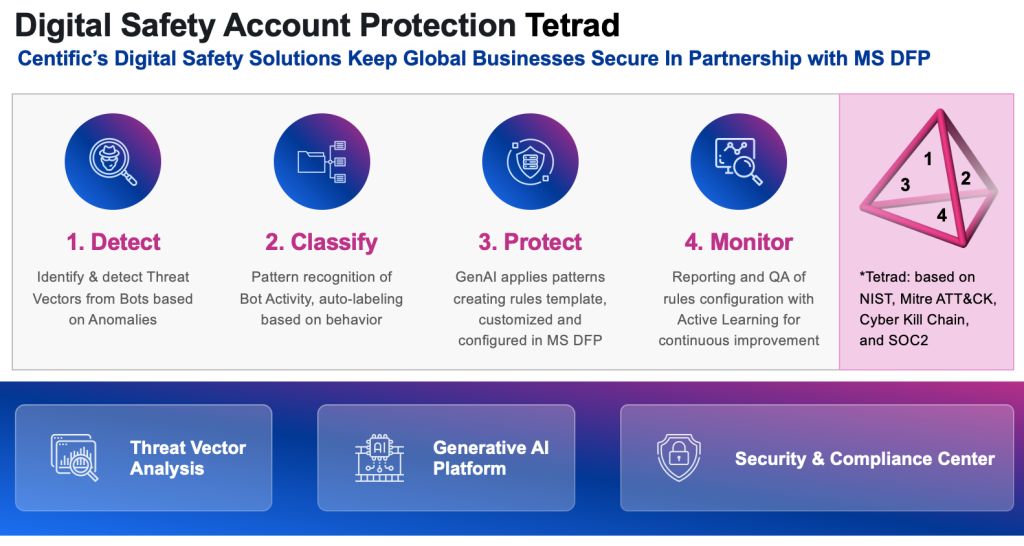How to Fight Malicious Bots with AI

Bad bots are crawling all over the web and threatening businesses everywhere. They consist of malicious automated software applications capable of high-speed abuse, misuse, and attacks. In 2022, nearly half of all internet traffic came from bots, a 5.1% increase over the previous year. Fortunately, businesses have access to a solution to thwart bots: AI.
What Are Bad Bots?
Not all bots are bad. Bots can be neutral or even beneficial (like search engine spiders that index web content). Bad bots are designed to engage in harmful activities such as distributing spam content or gaining access to a user’s personal data by systematically inputting stolen usernames and passwords. Here are a few examples:
- Web scraping: these are programmed to extract content or data from websites without the owner's permission, which can be used for various malicious purposes. They are frequently used by data aggregators, scrapers, and content thieves.
- Brute force attack bots: they repeatedly try different password combinations to break into a system or an online account. These are used in credential stuffing attacks against various platforms.
- Distributed denial of service (DDoS) bots: overload a target website or service with massive amounts of fake traffic, causing it to become slow or unavailable.
These are but a few examples of bots among many that engage in activities that range from mildly disruptive to potentially catastrophic.
The Operational Impact
Bad bots can cost a business dearly – an estimated 3.6 percent of their online revenue. And unfortunately, bad bots have a far-reaching impact including loss of revenue, higher operational costs, inventory stock-outs, impacting sales, marketing, and the entire supply chain, with a more amplified effect on the customer experience. Examples include:
- Lost revenue from high cart abandonment, invalid ads impressions and click-throughs, and higher chargeback rates.
- Escalating operational costs. These happen for a variety of reasons such as higher consumption of cloud computing resources and services by bots, and a spike in IT service ticket requests and mitigations.
- Disrupted supply chains. This happens, for example, because bad bots can produce false impressions that result in higher restocking costs, shipping, and inventory displacement, affecting the entire customer base.
Why Bad Bots Are Getting Harder to Stop
Unfortunately, it’s becoming increasingly difficult for business to stop bad bots. Why? One big reason: bot developers have been continually refining their evasion techniques. Modern bots can mimic human behavior, rotate IP addresses, use different user agents, and even run scripts to solve CAPTCHAs. According to Imperva, in 2022, the proportion of bad bots classified as advanced accounted for more than half (51.2%) of all bad bot traffic. In comparison, the level of bad bot sophistication in 2021 was 25.9%.
Bad bots are proliferating for other reasons as well. For instance, some bots now incorporate machine learning algorithms, enabling them to adapt and change their behavior in response to defensive measures, making them harder to detect over time. In addition, the availability of open-source tools and platforms for creating and managing bots has lowered the barrier of entry, allowing even less technically skilled individuals to deploy sophisticated bots.
Fighting Bots: The AI Factor
Businesses possess at least one important weapon to combat bots: AI. But AI needs to be deployed thoughtfully and carefully to be effective. Here are some considerations:
- Apply AI with a modular approach, known as an n-tier architecture. For instance, an AI application should include anomaly detection to identify outliers within a timed series of web requests, while neural networks ascertain the content and metadata of textual data deciphering between bots and humans. Separating the different aspects of the AI application into isolated layers or tiers makes it easier to manage, maintain, and scale applications by ensuring that each layer is responsible for a specific functionality.
- Understand how AI applies to your security posture, or the overall security status or health of an organization's information systems based on the resources, capabilities, and management strategies in place to protect against and respond to potential threats. The security posture should be frequently assessed through purple teaming exercises that perform reconnaissance and use ethical hacking techniques, simulating bot behaviors, and highlighting the gaps in your approach.
- Lean into customer journey analytics. Customer journey analytics is the essential offense for fighting bad bots. Customer journey analytics reveals the digital fingerprints of content consumption, dwell times, session durations, bounce rates, cart abandonment statistics, page visits, and a host of others, indicative of human behavior.
- Assess the emotional intelligence of your customer base. The emotional intelligence of user behavior powered by large language models and reinforcement learning from human feedback, helps AI models recognize, interpret, and comprehend user behavior, sentiment, and tone, attributed to human or bot behavior. This further reduces the noise in detecting bots.
Businesses should also evolve their bot mitigation strategies as the evolving threat landscape. That way, an organization can complement its defensive of bots with a strong offense.
How Centific Can Help
Centific does the heavy lifting to help businesses fight bad bots by combining insight, AI, and a rigorous framework, the Digital Safety Account Protection Tetrad. We take a proactive approach to detecting, classifying, protecting, and monitoring a client’s digital estate to continuously outsmart bad bots:

We know that bad bots succeed through scale, speed, and constant adaptation, much like a mutating virus. That’s why our team constantly applies evolving AI tools in context of our process at speed to support your revenue growth, optimize costs, and protect your customer experience.
